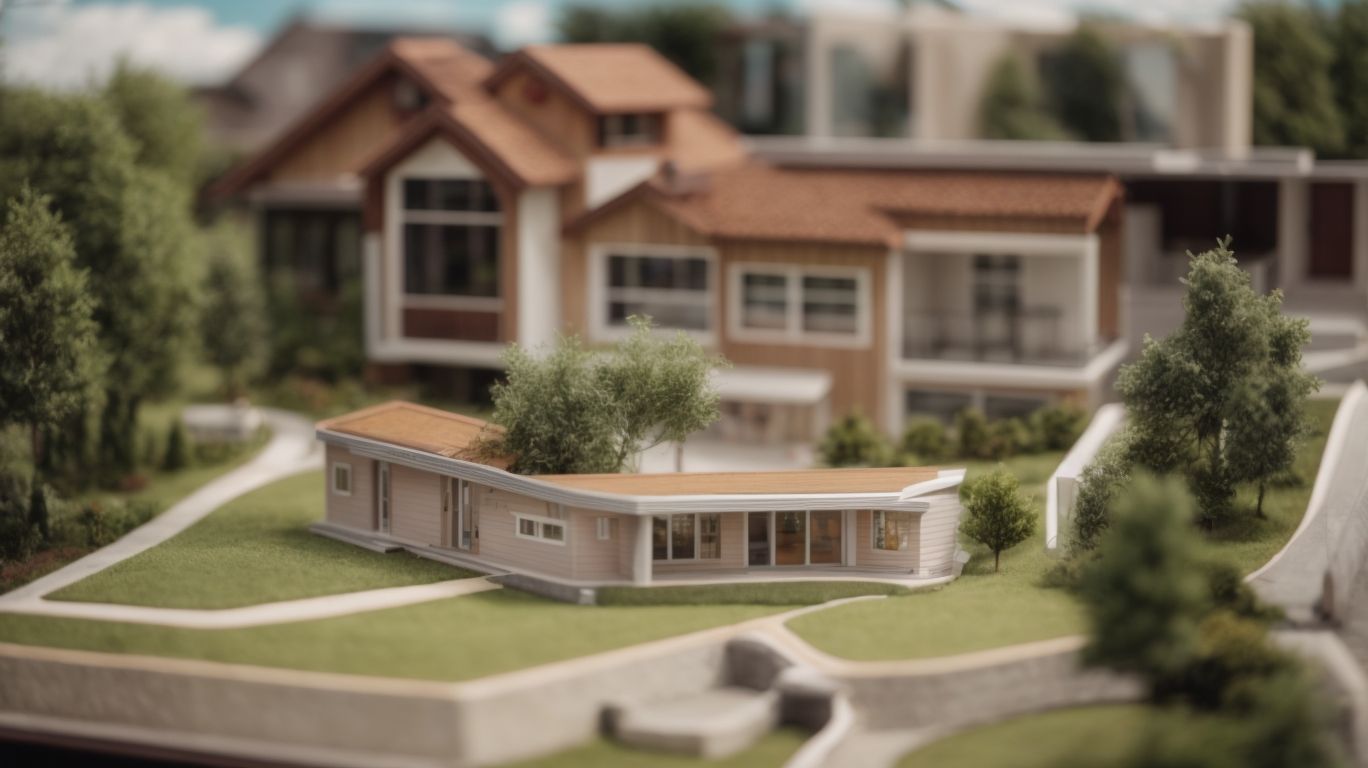
Financing Your Skyward Dreams: A Comprehensive Guide to Second Story Addition Loans
Are you considering adding a second story to your home but unsure about how to finance such a project? Look no further!
In this comprehensive guide, we will explore everything you need to know about second story addition loans. We will discuss the benefits and drawbacks of adding a second story to your home, as well as the various financing options available.
If you’re ready to elevate your living space, keep reading to find out how to make your skyward dreams a reality.
What is a Second Story Addition?
A Second Story Addition refers to the construction of a new level on top of an existing single-story structure.
This process is a popular choice among homeowners looking to increase their living space without sacrificing yard space. The purpose of a Second Story Addition is to maximize property value and functionality by adding more rooms or living areas.
One of the main advantages of this type of construction is that it allows for significant expansion without having to move or disrupt the existing layout of the home. The process typically involves structural assessments, architectural design, obtaining permits, and skilled construction work to ensure a seamless integration of the new level with the existing structure.
Why Consider a Second Story Addition?
Considering a Second Story Addition can significantly increase your living space and property value.
By opting for a Second Story Addition, homeowners open up the opportunity to create extra bedrooms, bathrooms, or even home offices, providing a solution to their growing space needs without having to move to a new house.
Adding a second story to your home can boost its overall value, making it a wise investment in your property’s future. This type of renovation allows for personalized customization to reflect your unique style and preferences, giving you the chance to tailor your living space exactly to your liking.
What are the Benefits of a Second Story Addition?
A Second Story Addition offers various benefits such as expanded living space, increased property value, enhanced home improvement opportunities, and the potential for future value appreciation.
By adding a second story to your home, you not only gain extra room for a growing family or for customized spaces like a home office or a leisure room, but you also effectively utilize your existing land space without expanding your property’s footprint. This space enhancement allows for more privacy, quieter bedrooms separate from the main living areas, and a better view from an elevated position. Second story additions can be a more cost-effective option compared to purchasing a new property, making it a financially savvy choice for homeowners looking to maximize their home equity.
Renovations to the second level can modernize the entire home, offering endless design possibilities to reflect your personal style. These upgrades not only enhance your daily living experience but also contribute to the long-term investment returns by keeping your property competitive in the evolving real estate market trends.
What are the Potential Drawbacks of a Second Story Addition?
Despite the benefits, Second Story Additions come with potential drawbacks like increased construction costs, budgeting challenges, and inherent risks associated with structural modifications.
These drawbacks often result in financial risks for homeowners, as unexpected expenses can easily push the project over budget.
Managing finances becomes crucial during a remodeling project of this scale, requiring careful budget management and cost estimation.
The construction complexities involved in adding a second story can lead to delays and additional costs if not properly dealt with.
Planning ahead and seeking professional guidance are essential to navigate through these challenges and ensure a successful renovation within the allocated budget.
How to Plan for a Second Story Addition?
Planning for a Second Story Addition involves considering factors such as zoning regulations, architectural plans, structural integrity assessments, and construction costs.
- Zoning regulations play a crucial role in determining the permissible size, height, and setback requirements for the new addition. It is essential to obtain the necessary permits from local authorities to ensure compliance with building codes.
- Architectural plans need to align with the existing structure and neighborhood aesthetics while incorporating the client’s vision. Structural considerations involve assessing the foundation’s capacity to support the additional load and ensuring proper reinforcement.
- Cost estimation should factor in materials, labor, and unforeseen expenses to create a realistic budget for the project.
What Factors to Consider Before Starting a Second Story Addition?
Before initiating a Second Story Addition, homeowners should assess factors like obtaining a building permit, ensuring structural integrity, establishing a payment schedule, and securing contractor bids.
One of the key considerations when it comes to building permits is understanding the local regulations and requirements for adding a second story to your home. It is essential to research the specific permit process in your area, including any zoning restrictions or design guidelines that may apply.
Conducting a thorough structural assessment of your existing home is crucial to ensure that it can support the added weight and modifications of a second story. When planning the payment schedule, homeowners should consider milestone payments tied to project milestones for effective budget management.
What are the Steps to Planning a Second Story Addition?
- Planning a Second Story Addition involves steps like hiring contractors, finalizing loan terms, obtaining insurance coverage, and ensuring compliance with regulatory requirements.
When selecting a contractor for your second story addition, it is crucial to conduct thorough research, check references, and obtain multiple bids to ensure you are choosing a reputable and experienced professional.
Next, negotiate loan terms carefully, considering factors such as interest rates, repayment schedules, and overall loan amount to secure the most favorable financing option for your project.
It is essential to review insurance policies to confirm adequate coverage for the construction phase and any potential risks.
Ensure compliance with all legal documentation, such as building permits and local regulations, to avoid any complications during or after the construction process.
What are the Financing Options for a Second Story Addition?
Financing a Second Story Addition can be achieved through various options such as loans, home equity lines of credit, FHA loans, and construction financing.
One popular financing alternative for Second Story Additions is the utilization of home equity options. Homeowners can tap into the equity built up in their property to fund the addition, often securing favorable interest rates due to the collateral nature of these loans.
Government-backed programs, like FHA loans, provide accessible financing solutions for those looking to undertake major home renovation projects.
Construction financing is another route that homeowners can explore, specifically tailored to fund the building phase of the addition with interest rates tied to the construction progress.
Home Equity Loan
A Home Equity Loan is a viable financing option for a Second Story Addition, leveraging the equity in the property and potentially offering investment returns through property value appreciation.
This type of loan allows homeowners to tap into the value of their property, using the accrued equity to fund home improvement projects like adding a second story. By utilizing the equity in your home, you can secure a lower interest rate compared to other types of financing, making it a cost-effective option for upgrading your living space. The increased square footage from a second story addition can boost the overall value of your property, potentially leading to long-term wealth-building opportunities through property appreciation.
Cash-out Refinance
Cash-out Refinance involves replacing an existing mortgage with a new one, allowing homeowners to access equity for a Second Story Addition while establishing a new repayment plan.
This financial strategy is particularly advantageous when homeowners wish to renovate or expand their property without taking out a separate loan. By restructuring their mortgage through a cash-out refinance, individuals can secure funds based on the available equity in their home, often at more favorable interest rates than other forms of borrowing. This approach also simplifies the repayment process, enabling homeowners to combine their existing mortgage balance with the additional funds needed for the Second Story Addition into a single loan with a structured repayment schedule.
Personal Loan
A Personal Loan can provide unsecured financing for a Second Story Addition, based on the borrower’s credit score and financial profile without requiring collateral.
These loans are typically dependent on the applicant’s creditworthiness, income stability, and debt-to-income ratio. Lenders evaluate these factors to determine the loan amount, interest rate, and repayment terms. Credit requirements vary among lenders, with some offering loans to individuals with lower credit scores but at higher interest rates.
The application process for a Personal Loan usually involves submitting income documents, bank statements, and identification proof. Unlike secured loans, Personal Loans do not involve collateral, making them an attractive option for homeowners looking to fund home renovations like a Second Story Addition.
Construction Loan
A Construction Loan is tailored for financing construction projects like Second Story Additions, with funds disbursed in stages based on progress inspections to mitigate foreclosure risks.
During the construction process, the borrower typically submits requests for disbursement when specific milestones are reached, such as completing the foundation, framing, or installing the roof. Each disbursement request triggers an inspection to verify that the work has been completed satisfactorily before releasing the designated funds.
This protocol ensures that the funds are used appropriately and that the project is progressing as planned. By closely monitoring the construction progress and disbursing funds accordingly, lenders minimize the risk of project delays or abandonment, reducing the likelihood of foreclosure.
Home Equity Line of Credit (HELOC)
A Home Equity Line of Credit offers a flexible financing option for Second Story Additions, with adjustable rates and requires careful due diligence and ongoing communication with the lending institution.
HELOCs not only provide homeowners with the ability to access funds based on the equity in their property but also offer the advantage of rate flexibility. This means that borrowers can take advantage of fluctuations in interest rates to potentially secure more favorable terms.
To qualify for a HELOC, financial institutions typically require thorough due diligence, including assessing the borrower’s creditworthiness and the value of the property. Effective communication with the lender throughout the application process and the life of the loan is crucial to ensure a smooth borrowing experience.
How to Choose the Right Financing Option for Your Second Story Addition?
Selecting the appropriate financing option for your Second Story Addition involves comparing loan options, evaluating competitive rates, and considering potential payment default scenarios.
During the process of choosing the right financing, it is crucial to delve into the details of interest rates offered by various lenders as this can greatly impact the total cost of the loan over its term.
Analyzing the terms of different loans is essential to ensure that you select one that aligns with your financial goals and timeline for repayment.
Risk assessment is also imperative; understanding the potential consequences of defaulting on payments can help you make an informed decision that suits your financial situation.
What are the Requirements for Securing a Second Story Addition Loan?
Securing a loan for a Second Story Addition typically involves meeting approval criteria related to credit score, homeowner status, and financial stability.
The creditworthiness of the applicant plays a crucial role in the loan approval process. Lenders often look for a good credit score to ensure the borrower’s ability to repay the loan. Homeowner eligibility is fundamental, as most lenders require the applicant to be the owner of the property where the addition will be built. Financial prerequisites, including income stability and debt-to-income ratio, are also significant factors evaluated during the application process to assess the borrower’s capacity to manage loan repayments.
How to Apply for a Second Story Addition Loan?
Applying for a loan to fund a Second Story Addition involves completing the application process, working with a loan officer, and undergoing underwriting for loan approval.
Once you have gathered all necessary financial documentation, such as income statements, tax returns, and proof of assets, the next step is to submit your loan application to the lender. The loan officer will review your application to ensure all details are accurate and complete before moving forward with the underwriting process. During underwriting, the lender assesses your financial history, credit score, and the specifications of your Second Story Addition project to determine the level of risk involved in approving your loan application.
What to Expect During the Loan Process?
Throughout the loan process for a Second Story Addition, expect stages like disbursement of funds, progress inspections, issuance of a completion certificate, and loan servicing post-approval.
Following the disbursement of funds, regular progress inspections will take place to verify that the construction meets the necessary requirements and is on track. These inspections are crucial to ensure compliance with building codes and quality standards.
Once the project is completed, the issuance of a completion certificate signifies that all work has been done according to the agreed-upon plans.
Post-approval loan servicing involves managing payments, interest rates, and any additional queries or assistance needed during the repayment period, providing a comprehensive support system for borrowers.




No Comments